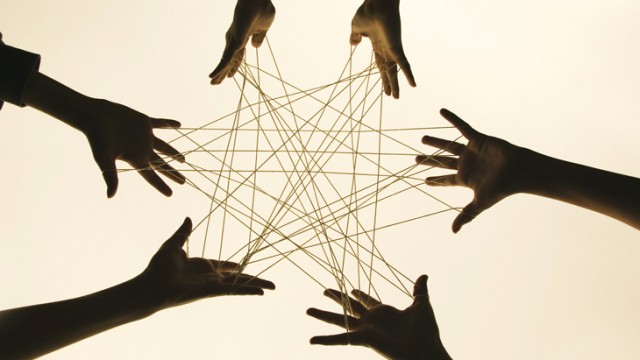Nonverbal Communication and Body Language
Interaction between people requires numerous forms of nonverbal communication—the exchange of information through changes in facial expressions, gestures, and body movements. Nonverbal communication is sometimes called “body language,” but this term isn’t entirely accurate, since we typically use such nonverbal cues to either contradict or supplement what is said verbally.
Facial Expressions, Gestures, and Emotions
One of the main types of nonverbal communication is facial expression, which conveys specific emotions. Paul Ekman and his colleagues described the movements of facial muscles that form various expressions. They developed a system called the “Facial Action Coding System” (FACS). This system aimed to bring clarity to a field that currently has many inconsistent and contradictory interpretations, as there are numerous views on how emotions should be identified and classified.
Charles Darwin, the founder of evolutionary theory, argued that the basic patterns of emotional expression are the same for all people worldwide. Ekman’s research, conducted among representatives of different cultures, supports this view. Ekman and Friesen studied an indigenous tribe in New Guinea whose members had virtually no prior contact with outsiders. When shown pictures of different facial expressions representing six emotions (happiness, sadness, anger, disgust, fear, surprise), the tribe members correctly identified these feelings.
The results of similar studies conducted with various people confirm the idea that expressing and interpreting emotions is inherent to human nature. However, this theory also has its critics. Ekman agrees with their arguments that his experiments are limited in scope and that cultural experience with nonverbal communication may also play a significant role. Nevertheless, his conclusions are supported by other research. Psychologist I. Eibl-Eibesfeldt studied the behavior of six children born deaf and blind to determine how their facial expressions compared to those of sighted and hearing individuals in specific situations. He found that the children smiled when engaged in obviously pleasant activities, raised their eyebrows in surprise when given something with an unfamiliar smell, and frowned when repeatedly given something they disliked. Since they could not observe others’ behavior, it suggests these reactions are innate.
Using FACS, Ekman and Friesen identified subtle contractions of facial muscles in infants that are also present in adults experiencing emotions. For example, infants pucker their lips and frown, resembling the expression of disgust in adults when given something sour. While facial expressions of emotion are likely partly innate, individual and cultural factors influence their form and the contexts in which they are considered appropriate. For instance, the way a person smiles, the precise movements of the lips and other facial muscles, and how long the smile lasts—all of these differ across cultures.
There are no gestures or poses that are characteristic of all, or even most, cultures. At least, no one has been able to prove this. For example, in some societies, people nod their heads to indicate disagreement, which is the opposite of the common custom of nodding to show agreement. Certain gestures frequently used by Europeans and Americans, such as pointing at someone with a finger, are entirely absent in some cultures. A gesture like placing a straightened index finger against the cheek and twisting it, which in some parts of Italy means approval, is likely unknown elsewhere.
Like facial expressions, gestures and poses are constantly used to supplement statements or to convey meaning when nothing is said. Facial expressions, gestures, and poses can all communicate humor, irony, or skepticism. The impressions we unintentionally make through nonverbal means often show others that we did not actually mean what we said. There are many subtle signs of nonverbal communication that conversation partners can pick up on. A spontaneous expression of sincerity on the face usually disappears after four or five seconds. If a smile lasts longer, it often indicates it is forced. An expression of surprise that lingers is often used for parody, to show that the person is not actually surprised, even if it seems like they should be.
“Face” and Culture
The word “face” in Russian also means what others think of a particular individual. This highlights the importance of nonverbal communication. For most of our lives, often without realizing it, we constantly monitor our facial expressions, posture, and gestures while interacting with others. In everyday life, we usually pay a lot of attention to “saving face.” Politeness or etiquette, which we try to follow in social settings, primarily involves not allowing ourselves to behave in ways that would lead to “losing face.” We avoid mentioning episodes from someone’s life or personal characteristics that could upset or humiliate them. If we suspect someone is wearing a wig, we refrain from making jokes about it—at least if we are not among their close friends. Tact is a kind of defensive tactic everyone uses, hoping that their own shortcomings will also not be discussed publicly.
Some people have an innate ability for effective nonverbal communication. They are good at controlling their facial expressions and being tactful in conversation. Others develop this skill through life and professional experience. For example, a good diplomat must be able to pretend to enjoy interacting with people whose views he does not share and for whom he may feel aversion. The fate of entire nations can depend on how well he manages this. Thus, nonverbal communication can reduce hostility between countries and even prevent war.



